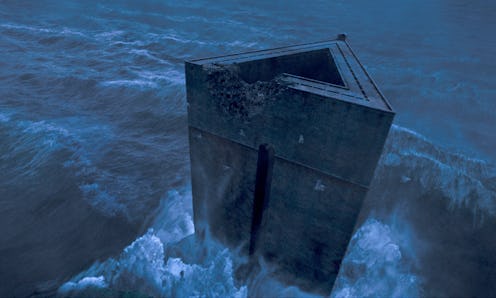Books
What Does Azkaban Mean?

If you’ve ever found yourself wondering: “what does Azkaban mean?”, you’re not alone. Sure, every self-respecting Potterhead knows that the mere mention of the infamous, dementor-run prison for wizards and witches incites terror in the hearts of all members of the magical community (lest we forget poor Hagrid) — but what does the name Azkaban really mean, and where does it come from? Now, intrepid Potterheads, you’ll have your answer — and not surprisingly, the name Azkaban gives readers a clue to the wizard prison’s Muggle equivalent.
Short Stories From Hogwarts of Power, Politics, and Pesky Poltergeists , one of the three new Pottermore Presents e-books released by JK Rowling on September 6, dives deep into the background of two of the wizarding world’s most recognized institutions: the Ministry of Magic and Azkaban prison, as well as profiling some of their more nefarious figures: the cringe-worthy Dolores Umbridge, the one-time potions master Horace Slughorn, and of course Tom Marvolo Riddle, to name a few. And included in Pottermore Presents is JK Rowling’s inspiration for Azkaban itself.
Constructed on a freezing, unmapped island in North Sea during the fifteenth century, the Alcatraz-style (hint, hint) fortress wasn’t always a prison. In fact, it began as the private home of the dark and sadistic wizard Ekrizdis, who used the structure to lure Muggle sailors to most unpleasant deaths. After Ekrizdis died, the fortress was abandoned as a demontor breeding ground until it was discovered by the Ministry of Magic, at which point the structure was deemed undestroyable and re-purposed into Azkaban prison.
And yes, in case you haven’t caught on by now, the name “Azkaban” is in-part derived from the equally-inescapable Alcatraz Federal Penitentiary, located on an island 1.25 miles offshore from San Francisco, in the rough-current and shark-infested (although not usually man-eating, contrary to popular myths) San Francisco Bay. In addition to sharing inhospitable locales and inspiring morbid curiosities, both Azkaban and Alcatraz are common in another way too: each prison boasts their fair share of “escape” lore. You probably well remember when there were two mass breakouts of Death Eaters during Harry Potter’s years at Hogwarts, as well as the most notorious Azkaban breakout of all: that of Sirius Black. Azkaban’s Muggle equivalent boasts an even larger number of attempted breakouts, although the success rate for inmates was far lower (according to prison records, zero — although scholars of the prison might debate that.) During Alcatraz’s 29 years of operation there were 14 total escape attempts, made by 36 inmates — and only one escape attempt has ever been left unsolved; that of inmates Frank Morris, John Anglin, and Clarence Anglin, who left papier-mâché replicas of themselves in their prison beds before tunneling through an Alcatraz wall and climbing aboard an improvised inflatable raft, into the San Francisco Bay. That kind of thing would never have happened on a dementor’s watch, let me tell you.
According to Rowling, the other inspiration for the name “Azkaban” comes from the word “Abaddon”, a Hebrew term that means “place of destruction” or “depths of hell.” So now you know… shiver.
Images: Pottermore.com(1), giphy(1)